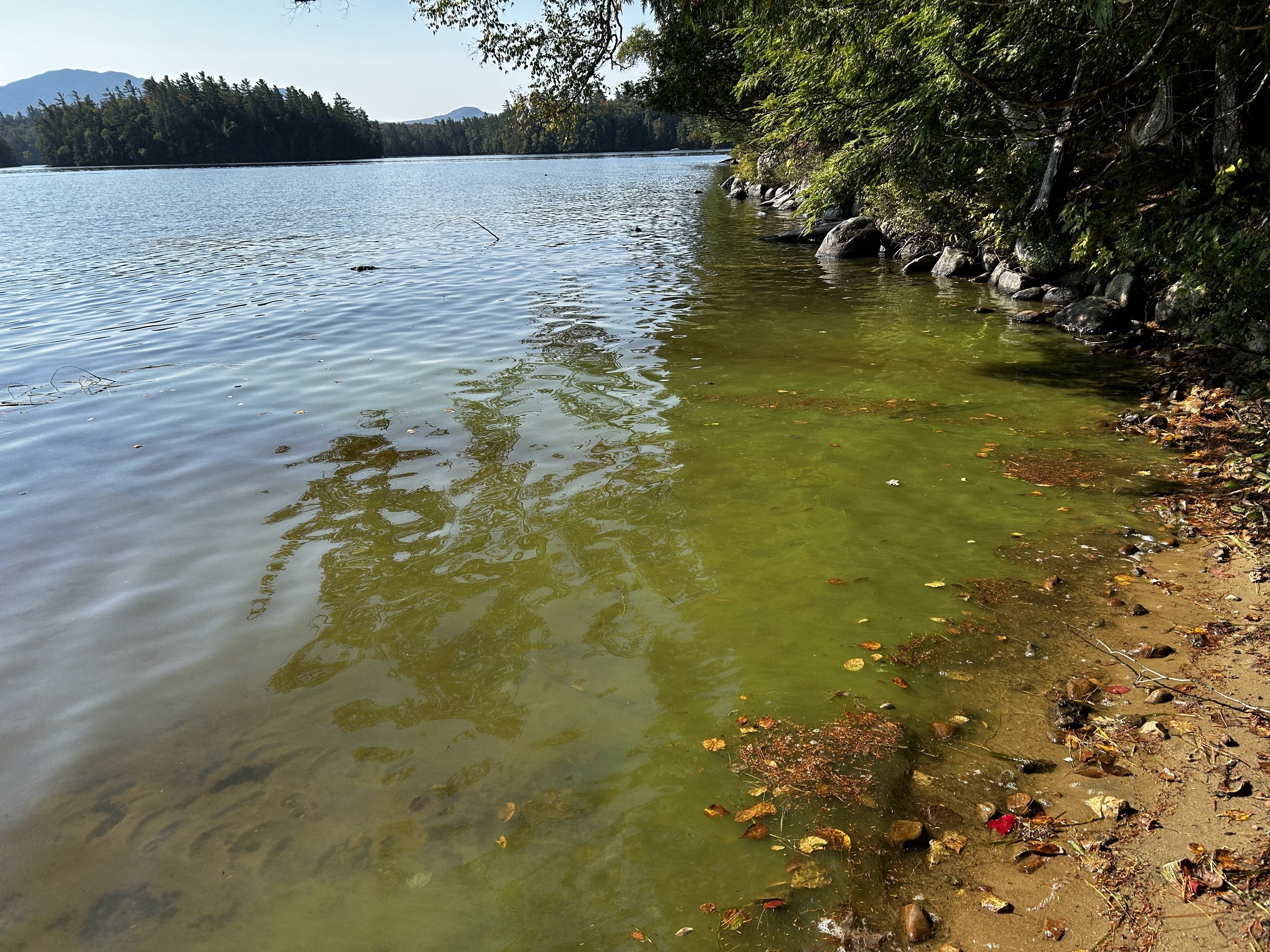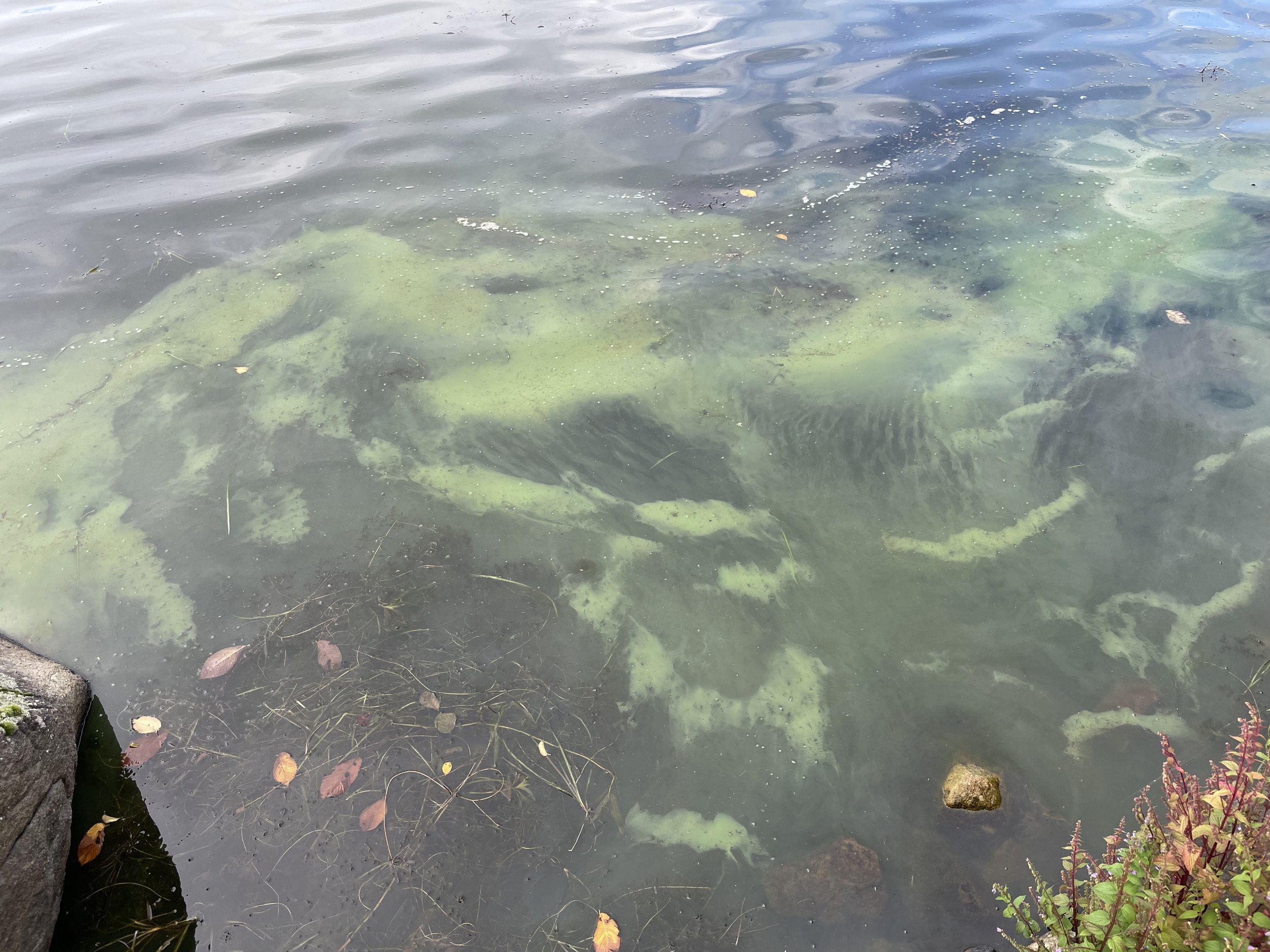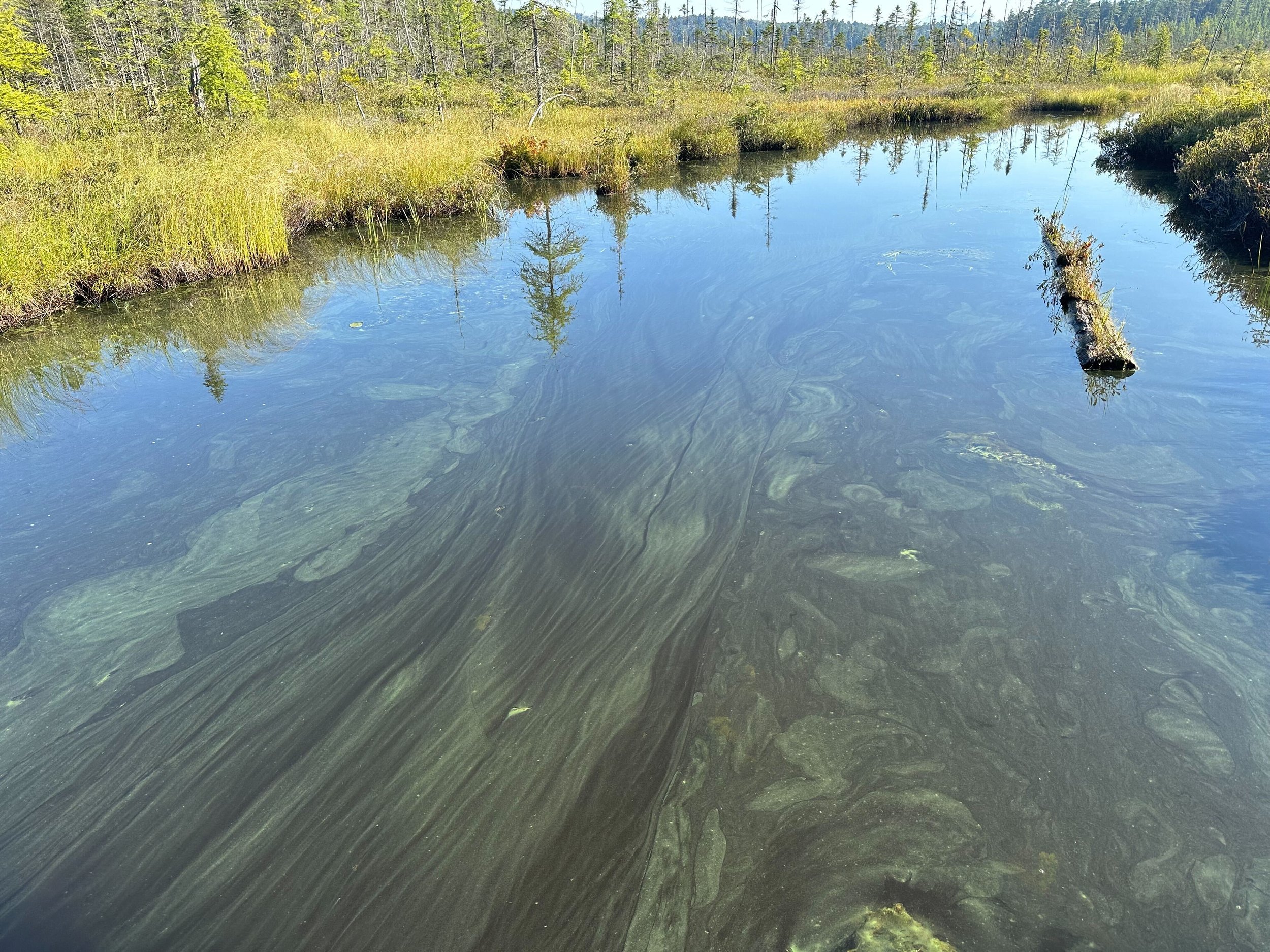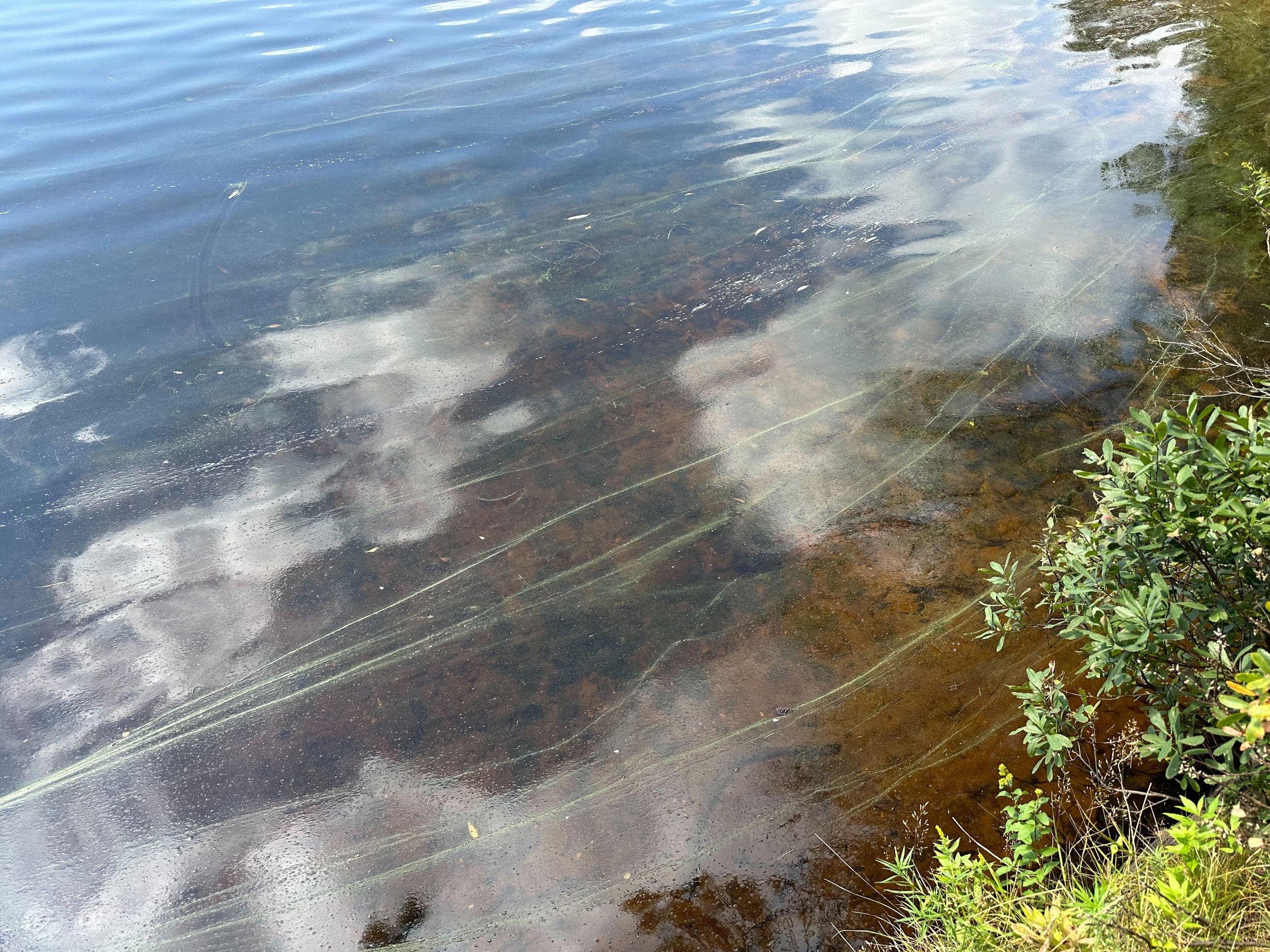
Harmful Algal Blooms
What Are Harmful Algal Blooms?
Harmful Algal Blooms occur when toxin-producing cyanobacteria form dense surface scums or blooms. These cyanobacteria can produce toxins and other harmful compounds that can affect people, pets, and wildlife. Toxin production within a bloom is highly variable, making it challenging to determine the risk of exposure. The New York State Department of Environmental Conservation (NYS DEC) and Department of Health suggest avoiding direct contact with HABs or any suspicious algal bloom. NYS DEC has adopted the phrase Know It. Avoid It. Report It. when it comes to HABs.
Know It: If you are recreating on or in the water, or drawing water for drinking water or other uses, know what HABs look like. We’ve provided a photo gallery below of HABs that have occurred in the Adirondacks to help you identify a harmful algal bloom. In general, blooms appear as surface scums with streaking lines, small clumps, or the appearance of spilled paint.
Avoid It: Avoid contact with any floating mat, scum, or discolored water. Never drink, prepare food, or cook with untreated surface water, especially if there is a suspicious bloom. Do not drink surface water during an algal bloom if you are not on a public water supply. Be especially cautious of dogs, which tend to increase their exposure to toxins by licking their fur.
Report It: If you see a suspicious bloom, report it to NYS DEC using their Suspicious Algal Bloom Report Form. Be sure to take two digital photos, one close-up, and one wide angle, to upload through the form.

Help Support Harmful Algal Bloom Monitoring & Research
AWI is raising $1 million to build lab and staff capacity to conduct harmful algal bloom monitoring and research. This funding will support the purchase of laboratory equipment to test for the toxins produced by HABs, upgrade microscopes to study the cyanobacteria responsible for HABs, provide technical assistance and support to our communities when HABs occur, and provide training to AWI staff to ensure there is a team of experts ready to assist when HABs occur. Your contribution will help ensure access to clean water in the Adirondacks.
Harmful Algal Bloom Photo Gallery
The photos below are of confirmed harmful algal blooms (HABs) in the Adirondack Park. If you see something similar to the photos, please submit a report to the NYS DEC’s Suspicious Algal Bloom Report Form. Identifying HABs can be difficult; avoiding contact with scum, floating mats, or discolored water is best. Typically, HABs will appear as parallel streaks or small clumps on the water surface. Some HABs will also have the appearance of spilled paint.
Barnum Pond (Franklin County) - September 6, 2023 Source: AWI
Lower St. Regis Lake (Franklin County) - September 5, 2023 Source: AWI
Upper Saranac Lake (Franklin County) - September 5, 2023 Source: Upper Saranac Foundation
Barnum Pond (Franklin County) - September 4, 2023 Source: AWI
Augur Lake (Essex County) - August 26, 2023 Source: NYS DEC
Indian Lake (Franklin County) - June 25, 2023 Source: NYS DEC
Mirror Lake (Essex County) - November 15, 2022 Source: AWI
Mirror Lake (Essex County) - November 4, 2022 Source: AWI
Harmful Algal Bloom Look-A-Likes
Below are images of other types of algae or plants that are not harmful algal blooms. NYS DEC recommends avoiding contact with any mat, scum, or discolored water.
Green algae can look like wet fabric, stringy, or bubbling clumps. It may form dense mats on the surface or big globs under water. When poked with a stick or paddle, the mat can be pushed around or lifted out of the water, whereas HABs will not adhere to the paddle or stick in large clumps. Green algae do not produce toxins.
Duckweed is a small aquatic plant that can form dense mats. When looking closely, you can see individual leaves. Duckweed does not produce toxins. Click the image for a larger view.
Another view of duckweed clinging to a waterbottle and person's hand.
Funders
We thank the following funders for supporting AWI’s harmful algal bloom monitoring and research efforts.











